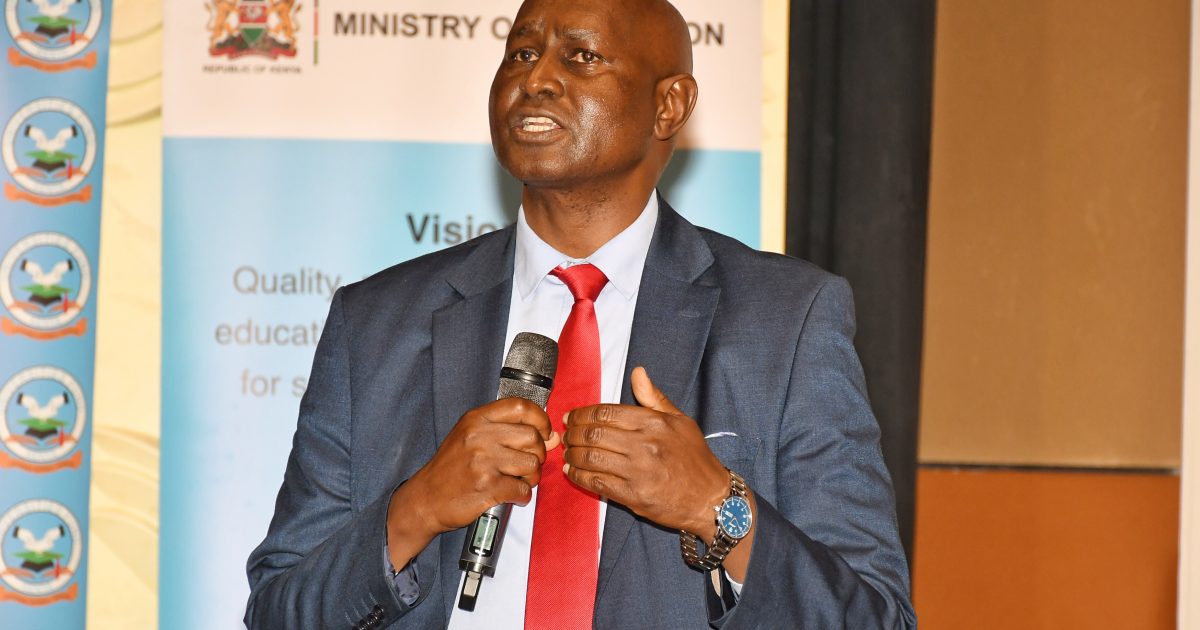The Principal Secretary (PS) in the State Department for Higher Education and Research in Ministry of Education Dr. Beatrice Muganda Inyangala has defended the new public universities funding model, which came into effect this financial year even as students opposed it saying it would make Varsity education inaccessible to many.
Dr. Inyangala said the adoption of this model was aimed at ensuring the full cost of implementing programmes in universities was taken care of and henceforth help solve the financial woes bedeviling universities.
“The New Funding Model (NFM) is designed to align funding more closely with the needs of individual students rather than institutions. This approach aims to better address the diverse economic backgrounds of our students and ensure that financial support is available to those who need it most,” the PS said.
The remarks were contained in a speech read on her behalf by the Secretary Administration in the State Department for Higher Education Fredrick Ndambuki during the opening of a two-day workshop on Evaluation of the New Funding Model (NFM) in Naivasha.
The aim of the workshop is to reflect on the implementation of the first cycle of the New Funding Model (NFM).
The Ministry of education together with other agencies implemented the model with the First Year students joining universities and Technical and Vocational Education Training (TVET) institutions in September 2023 after it was launched by President William Ruto in May last year.
The workshop is being attended by Chief Executive Officer of Government Agencies in the education sector, senior Ministry of Education (MOE) officials and student leaders from public and private universities.
But student leaders have come out guns blazing claiming the programme was implemented without consulting the students and that the new funding model would see many miss out on the university education, since the bulk of the funding was in form of loans, which would be a burden to students. The NFM introduces several key changes from the old funding model, which include Delinked Placement and Funding (DPF), where placement would now be based on merit and choice.
Students will also apply separately for financial assistance, including government scholarships and loans.
Another change being introduced by the model is Need-Based Funding, where instead of a uniform grant, funding would be based on the Means Testing Instrument (MTI) to determine the level of need for government scholarships and loans.
In the new funding model, the funding criteria is now based on the actual cost of university programmes, which varies from institution to institution and the cost of Funding Ratios.
Further, in NFM, Universities will benefit from diversified funding streams, including student financing, research grants, capital infrastructure grants, and consultancy services and the applicants (students) are categorized into five bands based on household income levels.
Each band receives different levels of scholarships, loans, and household contributions. For instance, students in Band 1 receive 70 per cent scholarships and 25 per cent loans, while those in Band 5 receive 30 per cent scholarships and 30 per cent loans.
To streamline the application process, the Kenya Universities and Colleges Central Placement Service (KUCCPS developed a central portal (www.hef.co.ke), where students could apply for both scholarships and loans.
The Higher Education and Research PS revealed that so far, they had verified and allocated funds to a significant number of applicants as follows; University Students: 110,223 applications have been verified and allocated Sh11.74 billion in scholarships and Sh12.47 billion in loans, totaling Sh24.21 billion and in TVET Trainees: 104,878 trainees applied and have been verified and allocated Sh3.90 billion in scholarships and Sh3.87 billion in loans, totaling Sh7.77 billion.
“So far, loans amounting to Sh13.53 billion have been disbursed to universities and TVETs for student upkeep and tuition. Additionally, scholarships amounting to Sh5.29 billion have been disbursed to 39 public universities for the first semester’s tuition fees,” Dr. Inyangala said.
The over 32 public universities in the country (according to 2021 Ministry of Higher Education data) are chocking under a total debt of over Sh75billion as at last year due to inadequate funding from the Government due to scarce resources.
Around 563,000 students were enrolled in universities in Kenya during the academic year 2022/23. The number increased from roughly 562,100 enrolled in universities in Kenya as at the beginning of the 2021 /22 academic year. Public universities rely largely on government subsidies to run their operations.
This financial year (2023/24), the National Treasury allocated only Sh44billion for higher education against a requirement of nearly Sh72billion leaving a deficit of nearly Sh28billion.
The Ministry of Education is consulting with Ministry of Finance and other stakeholders to have part of the huge pending bill facing Public Universities, which now stands at over Sh75 billion waived. The ministry is seeking to have part of the debt, which is now with the Parliamentary Committee on pending Bills dropped by Kenya Revenue Authority (KRA), especially the part involving Statutory deductions which were not remitted such as Pay as You Earn and National Hospital Insurance Fund (NHIF) due to lack of funds so that the universities could pay the other debts such as those owed to suppliers among others.
By Mabel Keya – Shikuku





